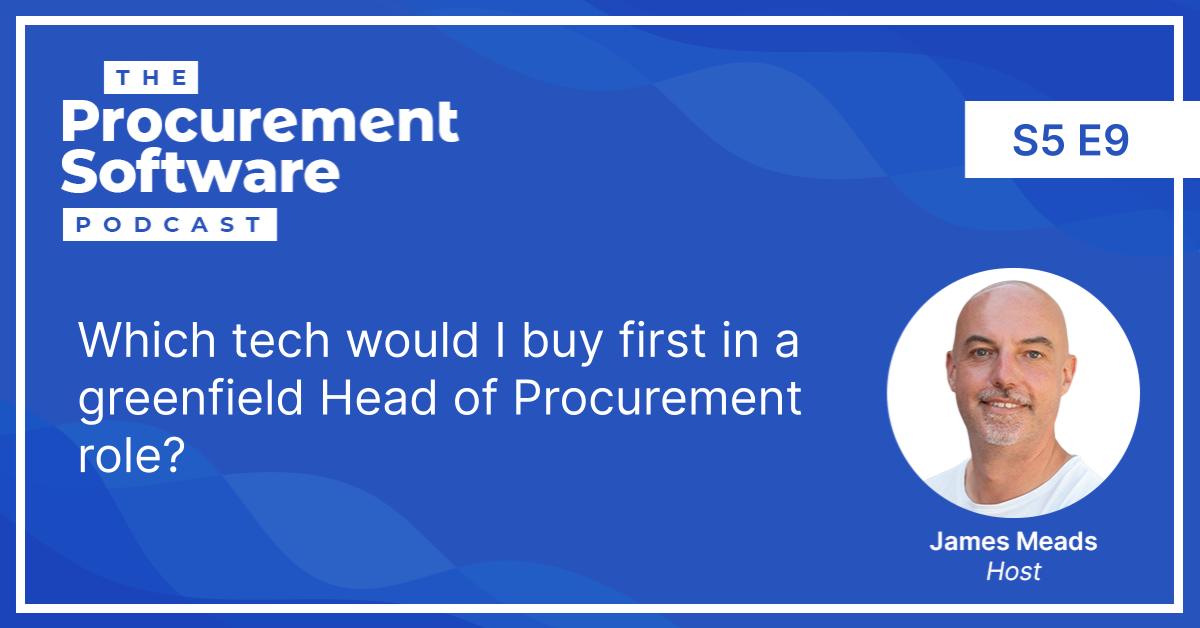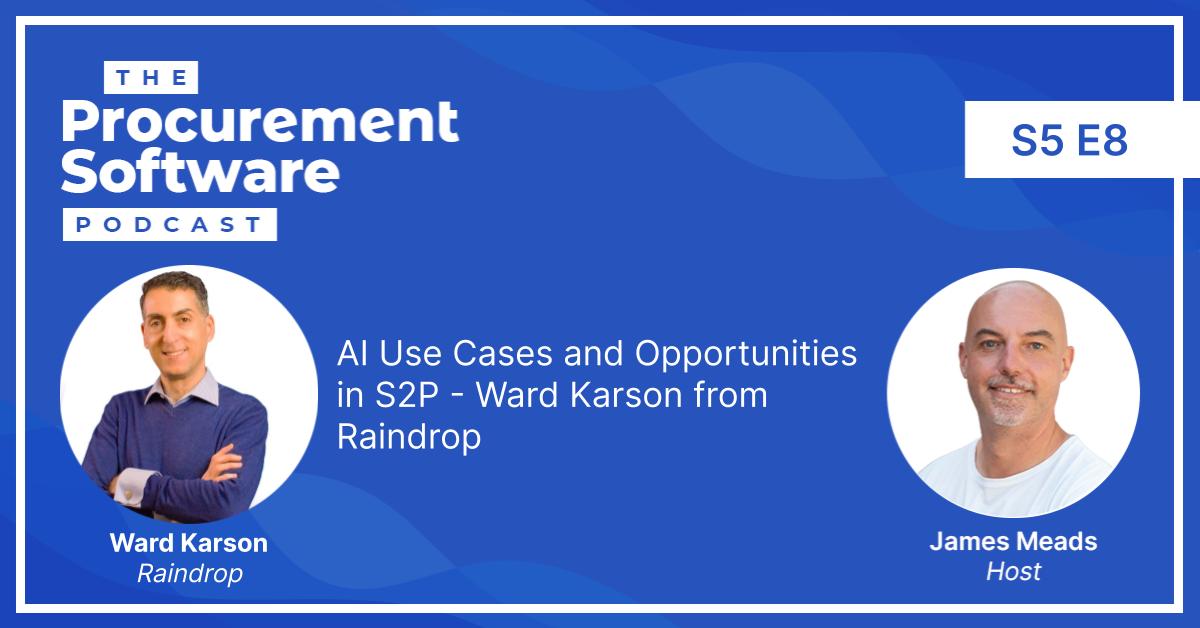Welcome back to The Procuretech Podcast!
We’re continuing our mini series where we ask influencers and industry experts for their thoughts on everything that’s happening in the digital procurement world.
Today’s guest is a former CEO, CPO and published author. She’s also an advisory board member to two very rapidly growing startups.
From CPO to Advising Startups – Joanna Martinez from Supply Chain Advisors
Her mission is to help individuals and businesses understand technology, improve processes and align with stakeholders.
That’s the Holy Grail, isn’t it?
Let’s welcome Joanna Martinez to the podcast, and kick off our chat with a quick recap on her background.
Joanna Martinez – A brief background
Joanna is an engineer by profession. She spent the first third of her career in supply chain roles for Johnson and Johnson. It’s a very very diversified company that gives a lot of autonomy to its different units.
So this gave her the chance with everything, from a very rigid, rules-based, process-oriented unit to one that was very much like a startup.
This was a great opportunity for learning. And makes great advice for anyone starting their career – pick a company that’s going to offer you a broad range of experience.
Joanna did a stint in procurement, and loved it. She decided that she wanted to focus on helping companies that didn’t have the kinds of resources that Johnson and Johnson had to create a purchasing organisation: Working for firms where she would either create a procurement organisation, or fix a broken one.
Twice in the subsequent years, she walked into roles that were vacant because the predecessor went out in handcuffs!
That becomes a very interesting stakeholder engagement learning experience.
And it was a fascinating look into how hard it can be to keep track of data when it comes to audits.
The importance of procurement technology
Joanna’s last role as a CPO involved a global company with a corporate stand that was very modest, but they had billions of dollars of client spend that they were processing but not really managing.
Technology was really important there. It allowed that company to differentiate itself against the competition. It wasn’t the largest supplier in that space. But they could go forward with what they had: Subject matter experts, the right kind of supplier relationships, a platform that clients could use.
Also Joanna had a really good CEO, who was willing to rethink the kinds of agreements he had in place. That was a huge enabler.
In fact, people would say, “What’s your most important supplier?” and Joanna would name a technology provider. Having a platform that was easy for clients to understand was hugely helpful. It allowed them to feel comfortable that Joanna was doing a good job on their behalf.
What drives positive disruption?
Joanna wrote a book called A Guide to Positive Disruption. It’s about change management and disruption and making sure that change gets adopted within the workplace.
But what’s the key driver there? Is it talent, or technology? Obviously it’s a mixture of both, but we ask Joanna where she sits on the see-saw there, in terms of which one makes the most impact.
She says that lots of things can cause disruption – in a way, it’s existed since the dawn of time.
But technology is certainly a huge driver now. Today, technology is changing how companies do business, even compared to a few years ago.
It might seem like a good thing to have 20 years of experience on your résumé, but these days that might not be the case! The world has changed so much in the last couple of years.
The pandemic became a great enabler for technology. Everyone seems to be doing things differently to what they did in 2018 and that was only four years ago.
Yes, there’s still a value to experience and in-depth subject knowledge. But it’s much more important at the moment to be asking questions, to be assessing your practices and asking if you’re keeping up.
Pandemic Disruption
The pandemic had a big impact on Joanna’s own story, too. Just before the lockdowns, she was having a banner year. She had great sets of assignments coming in, and was gearing up for a series of global talks and workshops.
Obviously that did not come to pass.
But she used the time to reinvent herself, to write a book, and to educate herself on new technologies. She already understood things like blockchain, AI, robotic process automation. But there were other subjects like the metaverse, web 3.0, NFTs that she didn’t understand as well.
Joanna wasted no time in educating herself, and even set up a Bitcoin mining operation in a spare bedroom, to better understand it first-hand.
In a way, Joanna ended up disrupting herself by doing this. She could add a whole other area of expertise to her talks. And covering tech from the perspective of someone who’s just had to learn this stuff was really helpful to people.
Many of the older generations – Gen X, or baby boomers – they’re not digital natives. And having the technology explained that way proved very useful.
Inevitably, someone would approach Joanna after a class and say: “Hey, thanks a lot for explaining this. Because I think I’m the only one in my office who doesn’t understand it. Everyone throws around these terms. And I don’t want to raise my hand and say, “I don’t understand that.”
So she actually wound up with a whole new workstream, educating people on tech in a jargon-free, understandable way.
What will have the biggest impact – changing roles, or changing tech?
Joanna thinks that in a way, it’s both. It’s not just the technology, it’s what the technology lets you do.
Oddly, it’s often the most mundane benefits of technology that have the most impact. For example, things that automate tedious elements like the RFP process.
RFP automation removes all the back-and-forth, all the repetitive emails and meetings and things like that. Sourcing people can now achieve in days what might have taken months in the past.
And wasting time doing those labour-intensive email exchanges isn’t a good way to spend time, money, or effort. That’s not doing anything for the sourcing profession.
If that person automates the repetitive stuff, they can use the time they’ve created to do something of more value. Maybe they’ll actually put their key suppliers together with their marketing folks, and help the suppliers better understand where the company is headed. That way, the suppliers can devote some energy and some manpower and some research power to making the enhancements that are going to be important for the company.
That’s a win/win all around.
Procurement can be notoriously bad at internal communication and marketing with stakeholders. That’s an area we really have to improve upon. But in fairness, the reason why is often that Procurement is stuck in the weeds doing administrative jobs. So technology can have a huge benefit there.
Technology won’t revolutionise things on its own, but if we apply it correctly, it will give us more free time, and it will give us answers faster. But whether or not we use that time and those answers to communicate better and elevate our profession is, ultimately, in the hands of people.
People often moan about procurement not having a seat at the table. But a lot of important corporate functions don’t have a seat at the table either. No-one’s going to hand that out.
You need to be showing the business that you are focused on their goals and what they’re trying to achieve. Sometimes, that’s figuring out a way to lower costs, because a competitor just figured out a way to do it.
We’ve all been clobbered by supply chain issues lately. There’s a lot of talk about onshoring, or nearshoring. Everyone seems to understand that. But people aren’t necessarily taking action on it.
It’s a whole different way of thinking about procurement, where we need to look at the total cost. Because if you – for example – have emergency transport to air freight something from China, that’s probably not going on procurement’s budget, but it’s still a cost to the business overall.
We need to find ways to level out the differences in salaries and the increase in transport costs. There will always be uncertain commodities because manufacturing bases are so dense in certain countries.
But in some cases, that may prove to be a false economy, once you really dig in and look at things like production stoppages and surplus inventory.
It’s not as easy as you may think, in terms of working out the total cost.
Wrapping Up
We wrap up today’s episode by thanking Joanna for coming on the Podcast and sharing her knowledge.
If you’d like to get in touch with Joanna, you’ll find all the links you need below.
Thanks for listening, and we’ll see you next time!
Stay in touch
- Connect with Joanna on LinkedIn
- Check out Joanna’s website
- Sign up for the Procurement Software Newsletter
- Book an Intro Call and let’s talk all things Digital Procurement!
- Connect with James on LinkedIn
- Follow Procurement Software’s LinkedIn Page


